#photinus pyralis
Text

Photinus pyralis lantern 🫴💡
#bug art#bug#bugs#bugblr#insect art#entomology#insects#insect#id in alt#beetle#Photinus pyralis#firefly#fire fly#lightning bug#big dipper firefly#Lampyridae#coleoptera
57 notes
·
View notes
Video
Common eastern firefly (Photinus pyralis) by Trey Wardlaw
#macro photography#macro#bug#insect#firefly#common eastern firefly#pyralis#Photinus#Photinus pyralis#flickr
0 notes
Text
Photinus fireflies are probably one of North America’s most iconic and beloved beetles, and rightfully so. P. pyralis is big and bright, with a yellow-green color to its bioluminescence

I also often see these smaller Photinus with a warm orange glow. I think they could be P. scintillans, which aligns with their size, flash pattern, the yellow sclerites on males, and where I’m located. females of that species are short-winged and flightless, so I’ll try to find one to figure out the ID for sure.
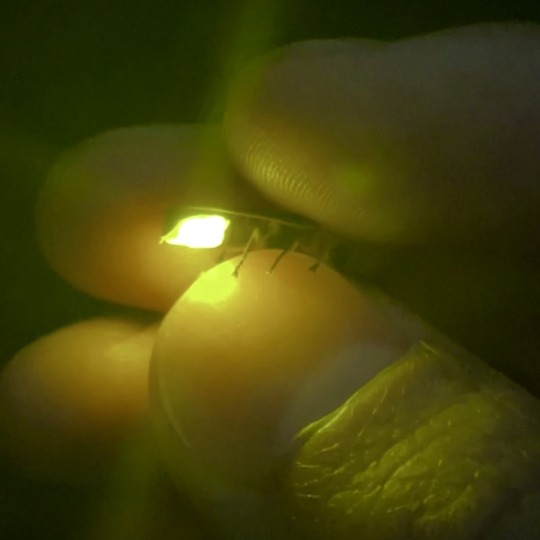

reminder that fireflies eat slugs and snails as larvae! if you like seeing them in your garden, stop trying to exterminate land gastropods and leave some vegetation where the adults can sleep during the day. slugs and “weeds” = more magic glowing bugs
10K notes
·
View notes
Note
Uh, I saw your post and you mentioned that you teach the kids... how do I put it... that are given to you at social functions due your park ranger aura for safekeeping how to tell the difference between predatory lightning bugs and normal lightning bugs.
And then you didn't tell us that secret! May I ask you to share the difference between predatory lightning bugs and normal ones?
Thank you very much :)
By popular demand and because this was the most polite ask: how to tell the predatory lightning bugs from the non-predatory lightning bugs.
First, there are over 2000 species in Lampyridea. I am not qualified to distinguish between all that. I grew up in Northern Ohio (71 species) and every year summer wasn’t official until the lightning bugs came out in the evenings (usually the first or second week of June).
This is our first clue. The first lightning bugs out each evening are a species of non-predatory chaps. Their glow goes in a special pattern. Flash, pause, “J” shaped flight about 2 -3’ off the ground. Repeat. Their glow is more yellow and lingers. These are the males of Photinus pyralis or the common eastern firefly. They look like this:

(Photo from iNaturalist: a lightning bug beetle, mostly black with gold lines around the wing casing. Head shield is yellow with a red “eye” with black iris in the center. Rounded front and back, long down the center.)
Their females hide in tall grasses waiting for the right suitor. If you’re lucky and clever you can see her dimmer flash in the grass beaconing the males closer.
As the dark of night progresses you’ll start to see a quicker, brighter, greener flash. Blip, blip, blip, blip, long pause. They are FAST! They’ll also mimic the flashes of Photinus females. These are usually higher up off the ground. Even in the trees! These lightning bugs aren’t looking for love.
Photuris (not gonna get to specific epitaph on this one without a sample and a key) are looking for dinner!
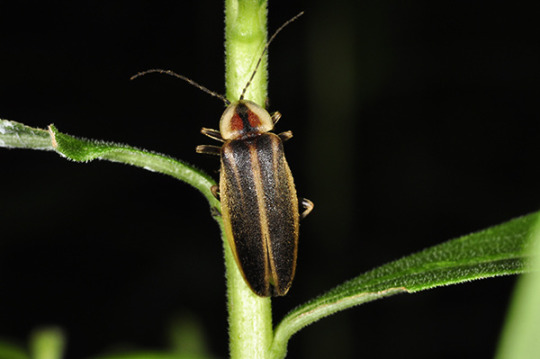
(Photo from blog.greatparks.org another lightning bug beetle. This one is slightly larger than the non-predatory bug. It has “shoulders” and extra gold lines running through the back. Its legs are longer and its shield is more “sharp”. The shield marking is less like an eye and more like a yellow D where the inside is a red triangle with a black line running through.)
Another way to tell is to go out at night and catch a bunch of lightning bugs (if you can; I hear they’re getting scarce). Offer them a slice of apple. If you wake up in the morning to only a few and the rest are dead, good chance you found some predators. (This is how I found out about them! Wooops!!)
Lightning bugs are freaking magical. I’m so sad to hear that they are yet another wonder that we are losing at an alarming rate. If this bugs you as much as it bugs me there are a few things you can do to help them:
1) do not spray for mosquitoes! That spray is not-species specific. It’s bad for lightning bugs. It’s bad for monarch butterflies. It’s bad for birds. It’s bad for bats. It’s bad.
2) kill your lawn. But Misha! You said they breed in the grasses! True! However native plants are going to provide so much more habitat for these guys than a gross monoculture of Kentucky bluegrass ever will. The Midwest has some of the best native plant nurseries in the country! Use that resource!
3) Advocate for them and donate to conservation if you’re able. Bugs don’t have voices and they fight an uphill battle just for being a bug.
Thanks for joining my ranger talk! Support your parks.
183 notes
·
View notes
Text


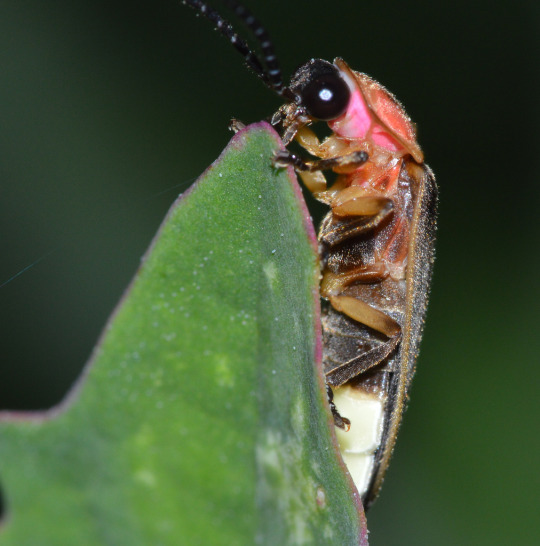
A Night Out with the Eastern Firefly
The eastern firefly, or North American firefly (Photinus pyralis), is a popular sight throughout the United States and southern Canada east of the Rocky Mountains. They are commonly associated with the beginning of summer, as they spend the winter hibernating underground and emerge only when the weather begins to warm. They are commonly seen in deciduous forests, grasslands, gardens, and backyards.
Contrary to their name, the eastern firefly is actually a type of beetle with well-developed wings. Adults are quite small, only 10-14 mm (0.39-0.55 in) long. They have a yellow and red head and a dark brown body with a narrow yellow stripe marking the outline of the wing casings. The main difference between the two sexes is the length of their wings; males have longer wings and are capable of flight, while females have shorter, less functional wings. Both sexes have a special organ on the end of their abdomens that produce light; however, the female's light tends to be weaker. The North American firefly produces its light by combining oxygen with a chemical called luciferin; the resulting chemical reaction gives off a glow which is amplified by special reflective cells in the firefly's abdomen.
Like all fireflies, P. pyralis uses its light producing ability to attract a mate. Males flash only while flying, in bursts about 6 seconds apart. Once a female signals her interest-- also by flashing-- the male lands near her and offers her a package called a spermatophore made of sperm, protein, and nutrients. If the female accepts, she inseminates herself and buries the rest of the package with her clutch of about 500 eggs. These eggs, which glow slightly during development, hatch about 4 weeks after being laid, and the larvae feed on the remains of the nutrient-rich spermatophore. The larvae can take one or two years to develop, and spend most of their time underground or near sources of fresh water like lakes and streams. Once the larva pupates and develops into an adult firefly, they only live in this stage for about a month before dying.
Both larva and adult eastern fireflies are predators, feeding on other insects like worms, snails, and other fireflies. However, larva spend almost all their time hunting for food, while adults spend the majority of their time seeking out a mate. To avoid predation, P. pyralis can emit foul-smelling odors and excretion of sticky substances; they also emit a chemical called lucibufagin that repells spiders. However, other species of fireflies will actually mimic the light patterns of the eastern firefly in order to predate upon them.
Conservation status: The North American firefly is currently considered Least Concern by the IUCN. However, they are threatened by light pollution, pesticides, and habitat loss.
Photos
Judy Gallagher
Katja Shultz
Sydney Penner via iNaturalist
#eastern firefly#north american firefly#Coleoptera#Lampyridae#rover fireflies#fireflies#beetles#insects#arthropods#deciduous forests#deciduous forest arthropods#grasslands#grassland arthropods#urban fauna#urban arthropods#animal facts#biology#zoology#ecology
83 notes
·
View notes
Text
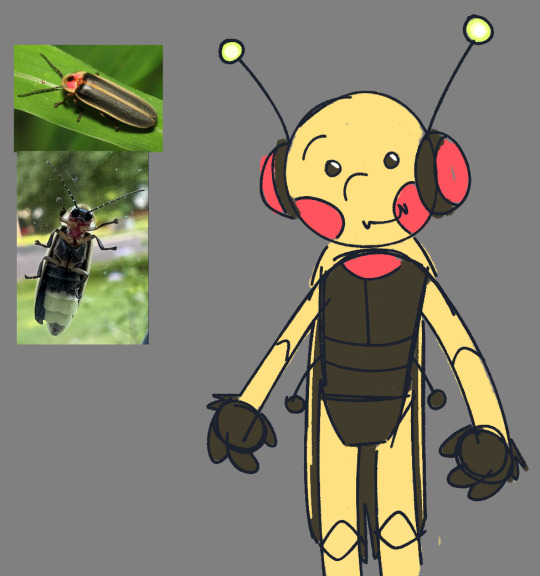
woudl you still love me if i was a Common Eastern Firefly (Photinus pyralis)
29 notes
·
View notes
Note
Hi love! Congrats on over 100 followers!! I brought a cake to celebrate.🎂
May I request #21 "It reminded me of you." for a romantic Tech story/scenario. (I honestly don’t know what to call it😅)
Congrats on your achievement again!🫶
What Is That?
Tech x GN!Reader

Pairing: Tech x GN!Reader
Tags & Warnings: fluff, romance, bugs
Word Count: 100
Author's Note: Thank you so much for participating Stitch! It means the world to me! And thank you for the cake 😊 I love cake and will definitely be eating a slice 🥰 I hope you like what I wrote 💚

“Tech,” you question as he places a jar on the table. “What is that?”
“Photinus pyralis,” he answers without looking up from his data-pad.
You scrunch your eyebrows as you try to figure out what the words mean. “Photi-what?”
“Commonly referred to as fireflies,” Tech answers. “I picked them up on my last mission.”
“Why?” you ask with a raised eyebrow.
“They reminded me of you,” he answers matter-of-factly.
“How?” you ask in confusion as you peer at the contents of the jar.
“They illuminate dark places using bioluminescence,” Tech begins. “Just as you illuminate my life with your presence.”

Event Masterlist
Masterlist
A03
Tag List: @nahoney22
Join my taglist HERE
Tip me a tea on Ko-fi HERE
#tbbb writes#tech x reader#tech x you#tbb tech#tcw tech#tech#100 followers drabble prompt celebration event#drabble#drabble prompts#100 words#the bad batch#bad batch#tbb#the clone wars#clones wars#tcw#star wars
87 notes
·
View notes
Text

JuneBug: Celestial Firefly (Photinus pyralis)
44 notes
·
View notes
Text

septembug prompt 3 - "glow"
eastern firefly, Photinus pyralis
23 notes
·
View notes
Text


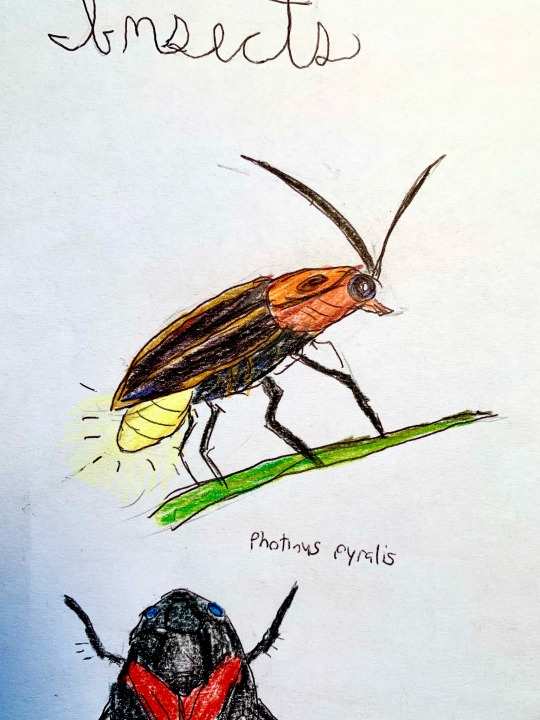



Insects!
Yes, these are all real species. No, I don’t know all their common names. The only one I’ve seen in person is Photinus pyralis, the firefly.
3 notes
·
View notes
Text
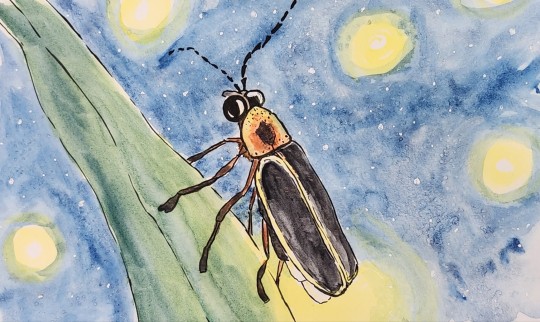
Daily Doodle #0022
Common Eastern Firefly (Photinus pyralis)
@onedoodleaday prompt: Draw something that glows in the dark.
I really need to figure out how to get a smooth wash of color down for the backgrounds. Any large washes I do are always so smudgy.
2 notes
·
View notes
Note
top five bugs this includes butterflies and moths
oh this is the hardest one of all of these!!
woodlice (oniscus asellus) - i had to include some kinda isopod on this list, and i spend a lot of time in the garden hanging out watching woodlice so

giant millipede (archispirostreptus gigas) - millipedes are just extremely friend shaped

chinese moon moth (actias dubernardi) -literally every single moth in beautiful, but so this isnt just a list on 5 months i tried very hard to pick just one (male left, female right)


orchid mantis (hymenopus coronatus) - IT'S JUST SO GODDAMN PRETTY

big dipper firefly (photinus pyralis) - so i used to have a dnd character than had a swarm of fireflies so obviously i did WAY too much research into them and ended up looking a lot into this specific species
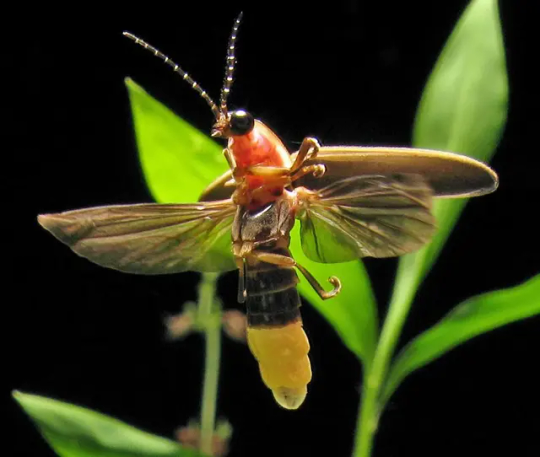
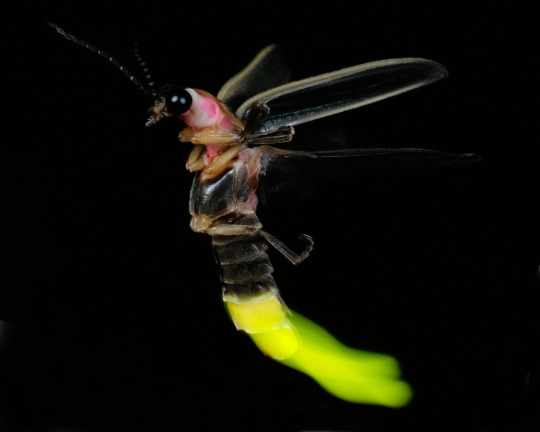
3 notes
·
View notes
Text

Chapter 3, "A Window Not Missed" - Bruce x Nat -- Available on AO3. Rated M.
Happy Friday! I finally got Chapter 3 of "A Window Not Missed" posted after a couple of weeks of writers' block. Things are already steamy during Bruce and Nat's first "date" at Avengers Tower. Excerpt and link to chapter below!
_____________________________
Bruce sighed and downed the remainder of his drink. “This is a heavy conversation. Fireflies, huh? Tell me about those.”
Natasha smiled and drifted closer after stretching.
Intentional or accidental? Bruce’s mind rushed to analyze, but he told it to calm down. Friends. Just friends.
“Photinus pyralis,” she answered cheekily. “Can I be a science bro now?”
“Haha. Impressive, Romanoff. But you’re way too pretty to be a bro.”
“Hey, pretty girls can be all techy too. Give me one of your programs. Any random one. I bet I can hack it.” She swirled around to face him, eyes narrowing in a glimmering challenge.
Bruce reached around her for the bottle and refilled her glass. His foot brushed over the top of hers along the jade tiled bottom, but the alcohol had slowed his reflex to jump away.
“Drink up, Romanoff. Keep deluding yourself,” he teased.
She fired back with a punch to the arm. It wasn’t a light one, either.
“I mean it. I’m going to show up randomly in your lab one of these days, Banner. You better be ready.”
“Oh, I’ll be ready.” He swallowed a huge gulp, enjoying this hazy feeling way too much. He leaned back and propped both arms along the back wall. Prosecco and the piping hot water had his blood boiling, but in the good kind of way. He was the furthest thing from green, and for a moment he forgot what the other guy could do to her as he tucked a strand of hair behind her ear.
#fanfiction#mcu fic#brutasha#natasha romanoff#bruce banner#brucenat#black widow#hulk#hulkwidow#the avengers
6 notes
·
View notes
Text


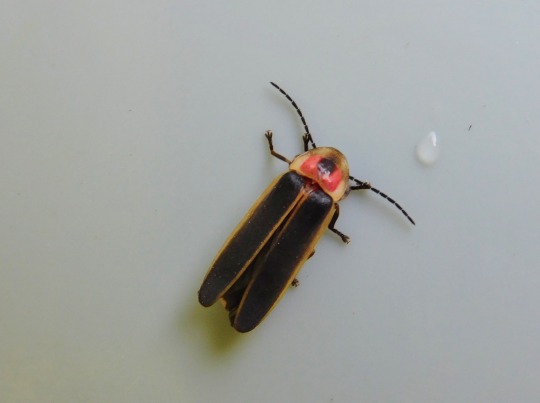
Photinus pyralis - Common Eastern Firefly...
I am speculating these do not taste very good, this specimen was just hanging out on a water bowl shared by assorted wild things and 6 stone-killer Hens...
#nature#my photography#insects#firefly#photinus#backyard nature#nature photography#feedlot#wildlife photography
3 notes
·
View notes
Photo

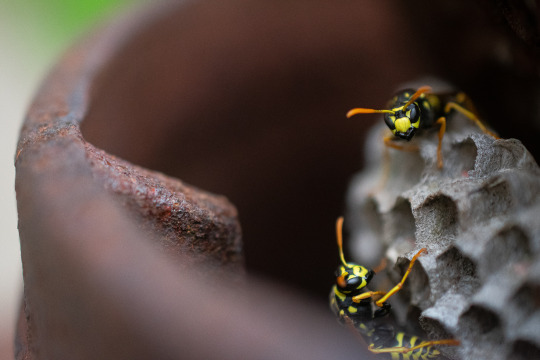
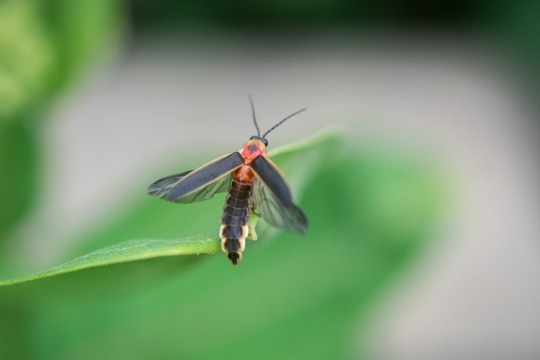
Red Milkweed Beetle (Tetraopes tetrophthalmus)
European Paper Wasp (Polistes dominula)
Common Eastern Firefly (Photinus pyralis)
Some cool buggies from the yard! We’ve got tons of milkweed growing and the bugs are obsessed with it. Haven’t found any caterpillars yet though, but we’ve seen a few monarchs.
Also it’s SO funny seeing people talk about how awful and mean and aggressive wasps are but I can literally open the old wood grill in my yard and shove my macro lens into their nest and the most they ever do is threat posture and stare at me.
#Long Post#Wildlife Photography#Not Pets#Invertebrates#Red Milkweed Beetle#European Paper Wasp#Common Eastern Firefly
5 notes
·
View notes
Text
Uncharismatic Fact of the Day
Fireflies are masters of clean energy; members of the family Lampyridae have a special organ to produce their light, and nearly 100% of the energy produced in that chemical reaction is emitted as light.

(Image: A common eastern firefly (Photinus pyralis) lights up the night by Stephen Marshall)
If you like what I do, consider leaving a tip or buying me a ko-fi!
111 notes
·
View notes
